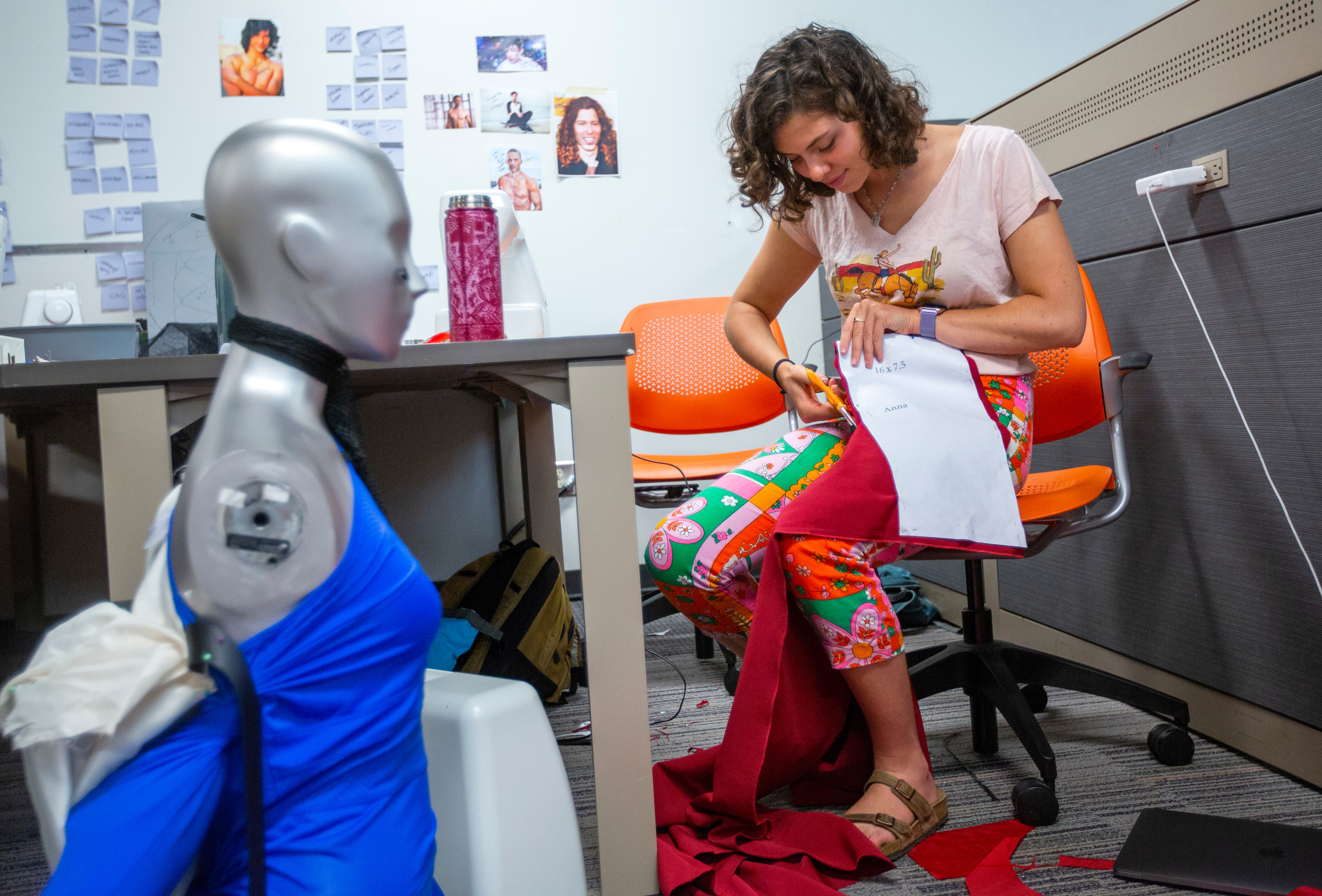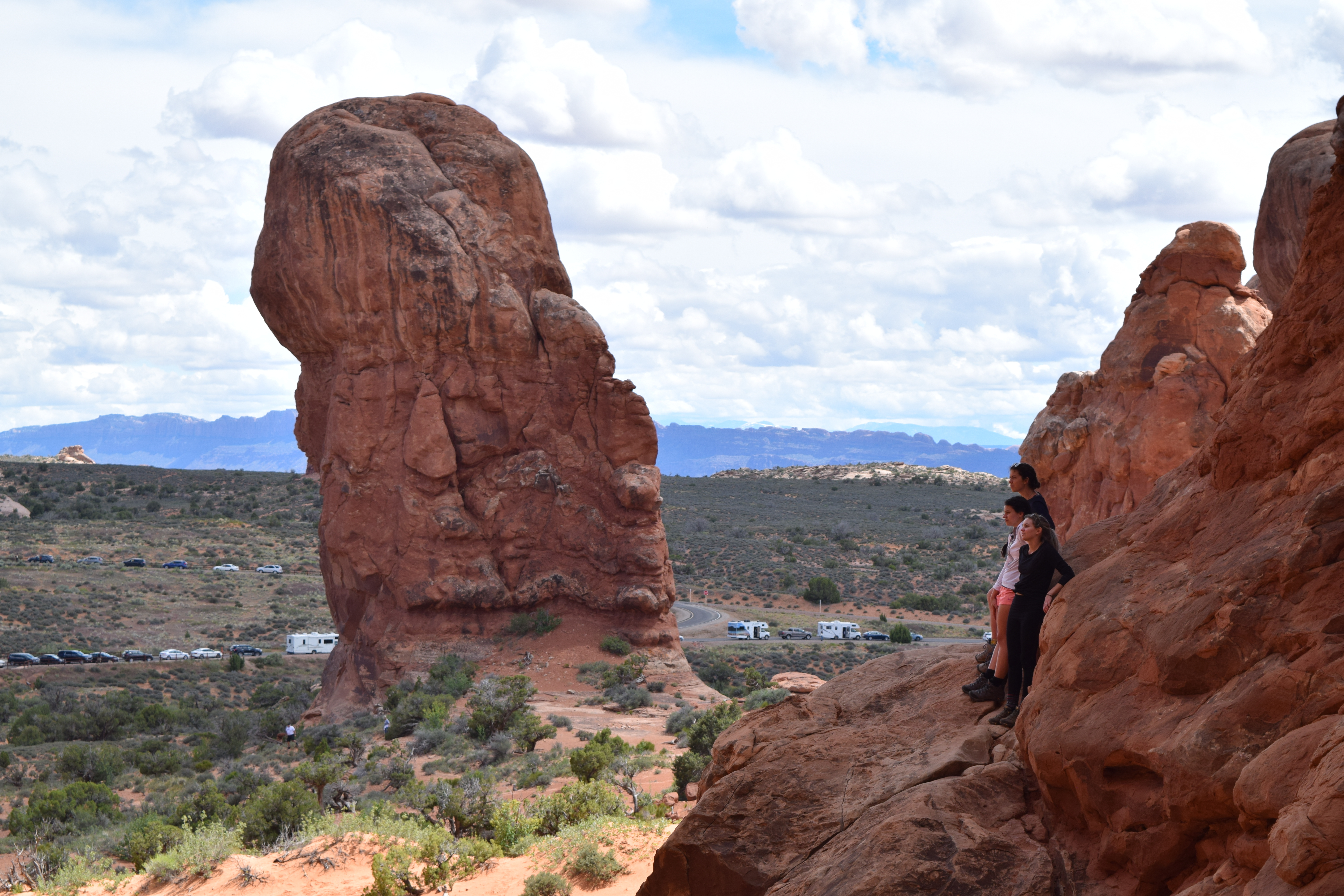
Industrial Design 490 student Anna Smith cuts fabric while working on construction of a backpack in class on Monday in the Armory. Photo by Christopher Gannon. Larger image.
AMES, Iowa — Two weeks spent "off grid" with no running water, electricity or cell phone service has sparked a slew of new product ideas from an Iowa State University class.
Their adventure was part of a new summer course taught by Mark Kargol, lecturer in industrial design. Kargol and 13 students learned self-sufficiency as they hiked, biked and camped off the beaten path in the American Southwest from May 26 to June 6.
After much-needed showers and a long drive back to Ames earlier this month, the students are now designing new products to help people in similar remote desert locations.
"Designing gear for backcountry, off-grid living is a hard thing to do if you've never experienced it," Kargol said. "Some of my students had never even camped before. Being able to draw from a lived experience gives the students empathy for the future users of their products."
The group started in Moab, Utah, traveling to Arches National Park and Canyonlands National Park. After their next stop, Bears Ears National Monument, the class stayed only in national forests.
"You just have to find a fire road, clear a space and set up camp," Kargol said. "There's no water and there are no bathrooms."
From there they traveled to the North Rim of the Grand Canyon, including a hike on the North Kaibab Trail.
Somehow, a premium cooler company in Flagstaff, Arizona, came across the class' Facebook page documenting their trip. Students were invited to the company's headquarters a few days later, providing insight into how this company designs, imports and markets their products.
The students finished their trip at Zion National Park and Bryce Canyon National Park in Utah, hiking the Angels Landing, Emerald Pools and Queens Garden trails.
"This is the first time we've done this class," Kargol said. "I love camping and backcountry living. I thought, let's design a class so that through an experience, students learn what they need to design. The ability to work from that experience is very valuable."
Why two weeks instead of one? "I wanted it to get uncomfortable," Kargol said, so that students could fully understand the experience in order to produce better designs.
As the students settled back into their work stations at the Armory on the Iowa State campus, ideas and designs began to flow. So far, they've designed daypack coolers, multi-tools, tents, cooking sets, sleeping pads, backpacks and hydration bladders.
Anna Smith, senior in industrial design from Arden Hills, Minnesota, is working on a backpack for older people.
"We met a 68-year-old while we were hiking, and my grandparents are 80 and they hike a lot," Smith said. "We found out that backcountry backpacks are not designed for older people, who have different needs than your average hiker."
She and three other students are working on backpacks with better adjustment systems so the user can control how it sits on the body. They are exploring detachable and interchangeable backpack components that can be added and removed as needed, with lightweight but sturdy frames to reduce strain on the user.
Past projects by industrial design students have involved disaster relief and refugee aid – similar in some ways to the off-grid course in that all three projects deal with situations of civil services either not working or unavailable.
Kargol hopes that in the coming years, products designed for off-grid situations could prove equally helpful in disaster relief and refugee aid scenarios.

ISU students pause to take in the view at Double Arch in Arches National Park in Utah. From front to back, Amy Englund, Olivia Morgan and Anna Smith, all students in interior design. Photo provided by Sam Nelson. Larger image.






